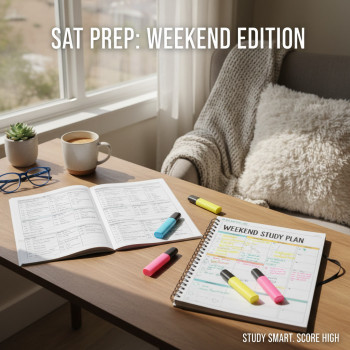Introduction: Why SAT Score Ranges Matter (But Don’t Tell the Whole Story)
If you’re sitting at the kitchen table with a practice test score in front of you, or helping your child compare colleges, it’s easy to get stuck on one number. The total SAT score (400–1600) is familiar, but that single number doesn’t tell the whole story. Colleges publish score ranges—most commonly the middle 50% (the 25th to 75th percentile)—to show the SAT scores of admitted first‑year students. Learning how to interpret those ranges turns numbers into strategy: where to aim, where to apply, and how to maximize scholarship and admission chances.

Quick reality check: What counts and what doesn’t
Before we dive deeper, a few grounding facts:
- The SAT total score ranges from 400 to 1600, with Reading & Writing and Math each scored 200–800.
- The national average SAT score sits a little above 1000 (roughly 1050); a score of 1350 or higher typically places a student in the top 10% of test takers.
- Colleges commonly report the middle 50%—the 25th and 75th percentiles—so if your score is between those numbers, you’re a “match” relative to last year’s entering class.
- Remember: SAT is one of many factors. Grades, essays, recommendations, activities, and demonstrated interest also matter—but scores can open doors (and scholarships).
Understanding Percentiles: The Lens That Makes Scores Useful
25th, 50th, 75th — what do those mean?
Imagine the scores of a college’s admitted students lined up from lowest to highest. The 25th percentile is the score where 25% of admitted students scored below it; the 75th percentile is where 75% scored below it. The middle 50% between those two numbers is the band that most admitted students fall into. If you fall below the 25th percentile for a school, that institution would generally consider you a reach based solely on score. If you’re above the 75th, you’re in the safety zone—again, relative to test scores only.
Why the band matters more than a single average
Average (or mean) SAT scores can be skewed by very high or low values. The middle 50% band gives a better picture of typical admitted students. When you compare colleges, looking at the 25th–75th range across schools tells you where your score is competitive and where you’d need to improve to be a serious contender.
How to Compare Score Ranges—A Simple Step‑by‑Step Process
Step 1: Gather the right numbers
Start with the 25th and 75th SAT scores for each school on your list. You can find those in official college profiles (many schools publish them) and in trusted college planning tools. Don’t mix scales—make sure all scores are total SAT (400–1600), not old SAT scales or section‑only numbers.
Step 2: Place each college into reach, match, or safety for you
Use these rules of thumb:
- Reach: Your score is below the college’s 25th percentile.
- Match: Your score sits within the college’s 25th–75th middle band.
- Safety: Your score is above the college’s 75th percentile.
This is a starting point—holistic factors can move a college from reach to realistic, or the other way around.
Step 3: Consider section scores and program fit
Colleges sometimes look closely at section scores. If you’re applying for engineering, a strong Math score matters. For humanities or social sciences, Reading & Writing can carry more weight. Compare not just totals but the section 25th–75th ranges when available.
Step 4: Weight the Whole Applicant
Score ranges are only one piece. If your GPA is higher than typical admits, if you have significant extracurricular achievements, or if your essays are exceptional, you can be more competitive even when test scores are a little low. Conversely, a great score won’t fully compensate for weak grades or missing prerequisites.
Example: Reading a Table of Score Ranges
Below is a sample table that shows how different colleges might report their middle 50% SAT ranges. This is illustrative—use the actual published numbers for any real decisions.
| College Type | 25th Percentile (SAT) | 75th Percentile (SAT) | Interpretation |
|---|---|---|---|
| Highly selective private | 1420 | 1550 | Most admitted students score very high; a student with 1400 would be a reasonable reach. |
| Selective public honors | 1280 | 1440 | Competitive; scoring above 1440 improves admission and merit scholarship odds. |
| Mid‑selectivity regional | 1100 | 1280 | Score in the middle band suggests strong fit; above the 75th opens up safety status. |
| Less selective/Regional state | 970 | 1150 | Broadly accessible; many admitted students are around the national average. |
Interpreting the Table: Practical Tips
- If your score is 1350: you’re likely a match at many selective publics, reach at the most selective privates, and above the 75th at many regional schools.
- If your score is around the national average (~1050): you’ll be competitive at regional institutions and should identify a few reach schools where the rest of your profile is compelling.
- If your score is 1500+: you’ll be in a strong position for highly selective colleges, but keep the rest of your application polished to match the academic rigor expected.
How to Build an Application List Using Score Ranges
A balanced list usually includes at least 6 schools: 3 reaches, 2 matches, and 1 safety. Here’s a practical workflow:
- Start with your score and section strengths.
- Use published 25th–75th bands to classify schools into reach/match/safety.
- Consider program fit, campus culture, cost, and geography—don’t chase prestige alone.
- Include at least one safety that you’d actually attend (check financial aid patterns and net cost estimates).
Scholarships and thresholds
Many colleges award merit scholarships at specific score thresholds. If a school publicizes scholarships tied to SAT ranges, compare those thresholds to your projected score after preparation. Sometimes increasing your score by 30–60 points can unlock thousands in aid—making targeted prep financially smart.
Real‑World Example: Making a Decision With Slightly Different Scores
Let’s say Mia currently scores 1280 (R&W 640, Math 640). She’s applying to three schools with these middle 50% ranges:
- College A: 25th 1340 — 75th 1500 (Highly selective)
- College B: 25th 1210 — 75th 1370 (Selective public)
- College C: 25th 980 — 75th 1150 (Regional state)
How Mia thinks: College A is a reach—she’s below the 25th. College B is a match if she can get to ~1320–1350; College C is a safety already. If her grades and essays are strong, College A might still be worth applying to, but she should aim to raise her Math to 690+ to improve her chances at B and A and to qualify for merit awards where thresholds exist.
How Much Score Improvement Is Realistic and Worth the Effort?
Improvement depends on starting level, time invested, and study strategy. Many students see 50–150 point gains with focused prep, especially when they switch from general practice to targeted study that addresses specific weak areas. For example, if a student is consistently missing vocabulary‑heavy sentence‑completion questions or gets tripped up by algebraic manipulations, targeted practice there tends to produce outsized gains.
Targeted practice beats random practice
Quality matters. Doing thousands of mixed practice questions without feedback is less effective than targeted sessions that include: error analysis, focused drills on weak question types, timed sections to build stamina, and full‑length practice tests to simulate the real test day experience.
Tools and Strategies for Comparing and Improving
1) Create a living spreadsheet
Put each college on a row with columns for 25th, 75th, program notes, scholarship thresholds, application deadlines, and your reach/match/safety designation. Update it as you research and retake tests.
2) Use practice tests as experiments
Treat each official practice test as a data point. Track patterns: do you lose points in passages, algebra, or the grid‑in math? Are certain question types disproportionately missed? Use those signals to shape the next two weeks of study.
3) Focus your timeline
If you have six months before applications are due, create a monthly plan: fundamentals first, then question‑type mastery, then timed full tests, and finally, polishing test day habits. If time is shorter, concentrate on high‑leverage gains—most students can raise their score by addressing predictable weaknesses with focused practice.
4) Consider personalized tutoring
One‑on‑one guidance can accelerate progress by focusing on the specific mistakes that hold you back. Sparkl’s personalized tutoring, for example, offers tailored study plans, expert tutors who target your weak areas, and AI‑driven insights to track progress—useful when every point can change admission or scholarship outcomes. Personalized sessions also help with pacing and test‑day confidence, two areas where many students lose easy points.
When to Test Blindly and When to Hold Back
Some students are tempted to take every available test date. That’s not always the best path. If you’ve just started a new study plan, give yourself time to internalize changes before testing again. On the other hand, if you’re plateauing despite steady training, a professional tutor or a focused two‑month prep sprint before a test date may be the right move.
Interpreting Changes in College Policies
Many colleges have adjusted test policies in recent years—some are test‑optional, some test‑blind, and others still consider scores strongly. When comparing score ranges, always confirm whether a school’s published ranges are for admitted students who submitted scores. A school that is test‑optional may still publish ranges for applicants who did submit tests, and using those published numbers will still help you judge competitiveness.
Checklist: Before You Send Scores or Apply
- Confirm each college’s current testing policy (optional, required, or score‑considered).
- Check whether the school’s published 25th–75th percentiles are for the total score and for the most recent admitted class.
- Look for scholarship thresholds tied to SAT scores and note the cutoff points.
- Compare your section scores to what the program values (STEM vs. humanities).
- Decide whether additional test dates or an individualized tutoring push (e.g., Sparkl’s tailored plan) could be worth the investment.
Putting It All Together: A Student Story
Alex scored a 1210 in junior year practice tests and wanted to apply to a mix of schools with 25th–75th bands from 1100–1420. He interpreted his results, saw his math was lagging, and pursued a targeted plan: weekly focused drills, two full practice tests per month, and three 1‑on‑1 tutoring sessions per month to work through persistent algebra and timing problems. After four months he improved to 1320—with Math up 120 points. That bump transformed two target schools from reach to match and unlocked a merit scholarship at another. The strategy was not magic—just focused work, clear comparisons, and targeted help where it mattered.
Final Words: Be Strategic, Not Paralyzed
Comparing SAT score ranges across colleges is an empowering exercise. It gives you a clearer plan, shows which gaps to close, and helps you allocate time and resources wisely. Keep the whole application in view—grades, essays, activities matter—and treat test prep as a piece of a larger application mosaic. If time or confidence is limited, targeted, personalized help (including tutoring and AI‑driven study plans) can move the needle faster than solo, unfocused effort.

Action Plan: Your Next 30 Days
- Week 1: Gather 25th–75th SAT ranges for your colleges; set one target score per school.
- Week 2: Take an official practice test under timed conditions; analyze mistakes; identify two highest‑leverage weaknesses.
- Week 3: Begin targeted practice (20–40 minutes daily) on those weaknesses; schedule one full practice test at end of week.
- Week 4: Decide whether to continue solo or add personalized tutoring. If you choose tutoring, look for 1‑on‑1 plans with tailored study plans and measurable milestones—Sparkl offers programs that combine expert tutors with data‑driven feedback to help you focus efficiently.
A Final Encouragement for Students and Parents
Numbers can feel cold, but they’re just one piece of a student’s story. When you compare SAT ranges, you’re not measuring worth—you’re finding fit and opportunity. Be merciful to the teenager in your house (and to yourself), celebrate small gains, and remember that well‑targeted effort pays off. Whether you’re improving by 20 points or 200, each step opens doors and provides options. Use score ranges to make smart choices, not to shrink your ambitions.
Ready to compare a specific college list? Start with the middle 50% bands, map reach/match/safety, and then decide where to invest time and support. If you want help turning that map into a study plan, consider a personalized approach—tutoring that pinpoints weaknesses, builds confidence, and tracks progress. That kind of support can turn an anxious scattershot effort into a focused and effective sprint toward the scores you want.
Good luck—and remember: the best score is the one you earn with purpose and persistence.














No Comments
Leave a comment Cancel